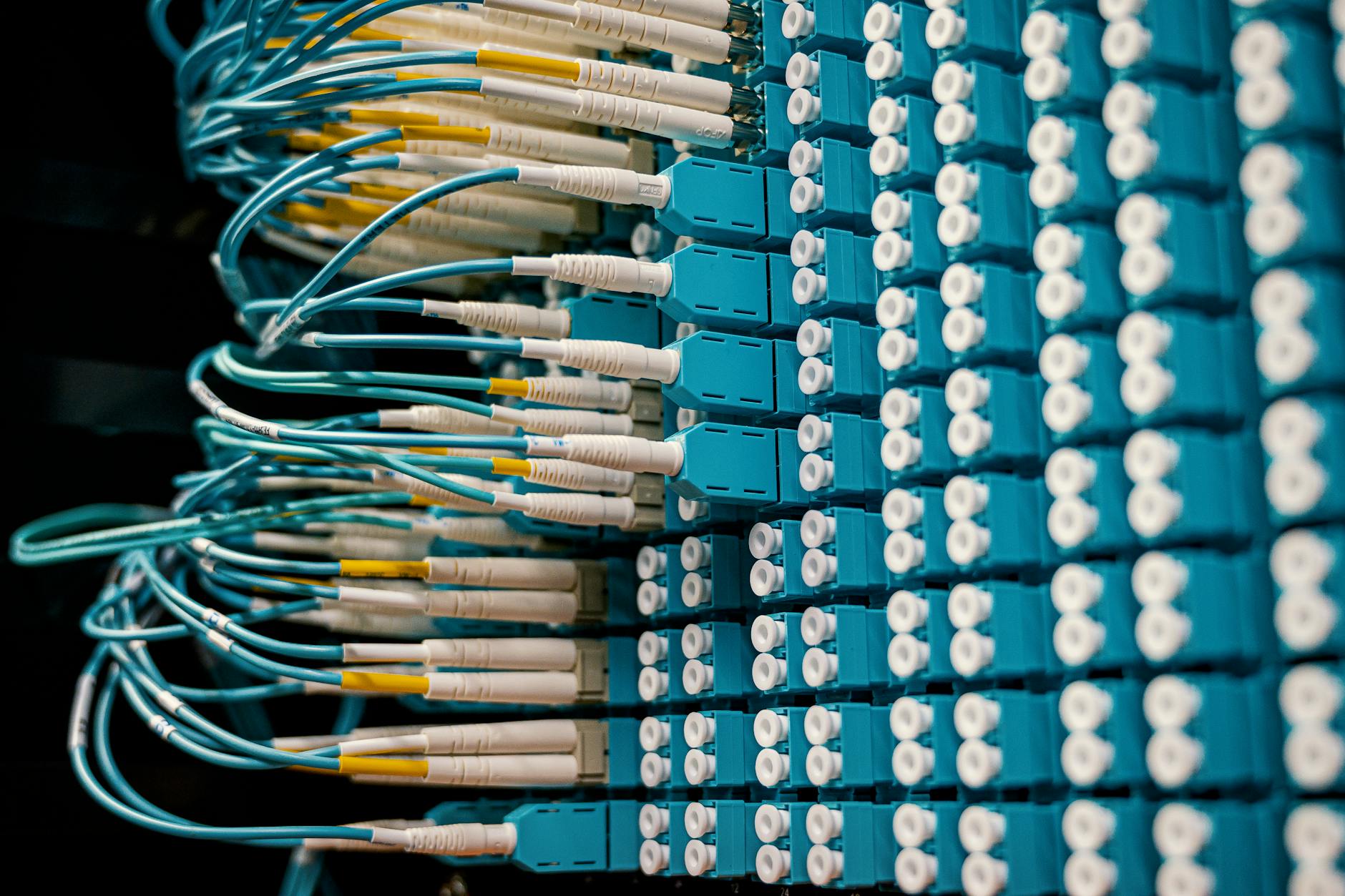DoS (Denial of Service) attack prevention is still a thing in 2024. What can protect your network from DOS attacks?
Network security is crucial for safeguarding your online operations. In this blog post, you will discover effective measures to protect your network from DDoS attacks. Implementing these strategies can fortify your network and minimize the risk of disruptive and damaging cyberattacks.
Here’s a table providing a step-by-step manual on concrete measures to protect your network from DDoS (Distributed Denial of Service) attacks:
| Step | Action | Description |
|---|---|---|
| 1. Implement Network Redundancy | Diversify and distribute network resources | Redundancy ensures that if one part of your network is attacked, other parts can handle the traffic and keep the system running. |
| 2. Install Anti-DDoS Hardware and Software | Use specialized DDoS mitigation tools | Anti-DDoS solutions can detect and mitigate large-scale traffic meant to overwhelm your network. |
| 3. Configure Network Hardware Against DDoS | Adjust settings on routers and firewalls | Configure your routers and firewalls to drop packets from obvious sources of attack or set rate limits. |
| 4. Secure Network Infrastructure | Regular updates and security patches | Keep all systems up to date with the latest security patches to fix vulnerabilities that could be exploited in an attack. |
| 5. Employ a CDN (Content Delivery Network) | Distribute load with a CDN | CDNs can absorb and distribute traffic across a network of servers, reducing the load on any single server. |
| 6. Establish a Baseline for Network Traffic | Monitor regular traffic patterns | Understanding normal traffic patterns helps in identifying unusual traffic that could indicate a DDoS attack. |
| 7. Create a DDoS Response Plan | Develop a plan for responding to attacks | A response plan ensures that your team knows how to act quickly and efficiently in the event of an attack. |
| 8. Use Cloud-based DDoS Protection Services | Leverage cloud-based solutions | Cloud services can offer scalable and robust DDoS protection, often with the capacity to absorb larger attacks. |
| 9. Conduct Regular Security Audits | Audit your network regularly | Regular audits help identify potential security weaknesses in your network. |
| 10. Train Staff in DDoS Mitigation | Educate your team | Ensure that your team is aware of the risks and knows how to respond to DDoS threats. |
| 11. Implement Geographical Blocking | Block traffic from untrusted regions | If your business doesn’t require global access, consider blocking traffic from regions known for originating DDoS attacks. |
| 12. Establish Rate Limiting | Set limits on your server requests | Rate limiting controls the amount of requests a server will accept over a certain period. |
| 13. Monitor and Analyze Traffic | Continuously monitor network traffic | Use traffic analysis tools to monitor for spikes or patterns indicative of a DDoS attack. |
| 14. Collaborate with Your ISP or Hosting Provider | Work with your ISP for additional protection | Your ISP may offer additional resources or strategies for DDoS mitigation. |
| 15. Use Anomaly Detection Tools | Deploy systems to detect unusual activities | Anomaly detection tools can alert you to traffic patterns that deviate from the norm, signaling potential DDoS activities. |
Implementing these steps can significantly enhance your network’s resilience against DDoS attacks, ensuring continued operation and security.
Understanding DoS Attacks
DoS attacks occur when legitimate users cannot access information systems, devices, or network resources due to malicious actions. This results in a denial-of-service condition, achieved by overwhelming the targeted host or network with traffic. This prevents access for legitimate users, impacting businesses by causing downtime and financial losses.
Common Denial-of-Service Attacks
DoS attacks can take various forms, such as the Smurf Attack, where the attacker sends spoofed source IP addresses to flood the target with responses, and SYN floods, which occupy server ports, preventing legitimate connections. Additionally, networks may be affected by DoS attacks indirectly if their ISP or cloud service provider is targeted.
Distributed Denial-of-Service Attacks
DDoS attacks involve multiple machines working together to attack a single target. Attackers often use botnets—hijacked internet-connected devices—to orchestrate large-scale attacks. By leveraging security vulnerabilities, attackers can control numerous devices to command a botnet and initiate DDoS attacks. This method significantly amplifies the attack power and complicates mitigation efforts.
The First Line of Defense: Firewalls
Firewalls are crucial in safeguarding your network from cyber threats, including DoS attacks. They serve as the first line of defense, creating a secure barrier between your internal network and the untrusted public Internet.
How Firewalls Shield Your Network
Located at the network perimeter, a firewall provides complete visibility into data flows across the network boundary.
It acts as a gatekeeper, monitoring all incoming and outgoing traffic, and helps identify and thwart potential threats before they can breach your network. Moreover, firewalls enable proactive protection against cyber threats, significantly reducing the potential damage caused by malicious attacks.

Configuring Firewall Rules for Maximum Protection
By implementing robust firewall rules, you can enhance the security of your network. These rules can be customized to allow or deny specific types of traffic based on predefined criteria. Additionally, next-generation firewalls offer advanced capabilities such as application control and identity-based inspection, enabling organizations to enforce strict security policies and access controls.
Overall, firewalls not only prevent unauthorized access but also play a critical role in safeguarding your network against potential DoS attacks and other malicious activities. Configuring firewall rules tailored to your network’s unique security needs is vital in maximizing protection and minimizing vulnerabilities.
Intrusion Prevention Systems (IPS)
An intrusion prevention system (IPS) is a crucial component in safeguarding your network against the constant threat of denial-of-service (DoS) attacks, offering proactive protection and real-time response capabilities.
The Role of IPS in Detecting DoS Attempts
IPS operates by inspecting network traffic, identifying potential threats, and taking immediate corrective action to thwart any malicious activity. It leverages advanced detection mechanisms to efficiently recognize and thwart DoS attempts, ensuring the continuous integrity and availability of your network resources.
Setting Up IPS for Your Network
Implementing IPS involves strategically placing the system inline within the network traffic flow, typically positioned just behind the firewall. IPS utilizes various techniques, including signature-based, anomaly-based, and policy-based monitoring, to effectively detect and prevent DoS attacks.
Additionally, it is essential to configure IPS to automatically respond to detected threats, such as alerting administrators, dropping packets, blocking traffic from the source, or resetting connections.
 Photo by Pixabay
Photo by Pixabay
Load Balancers: Distributing Traffic Evenly
Load balancers play a crucial role in managing and distributing traffic across multiple servers, ensuring optimal resource utilization and preventing server overload. In the context of DoS attack prevention, load balancers act as a shield against overwhelming traffic spikes, effectively distributing incoming requests and minimizing the impact of potential attacks.
Benefits of Load Balancers in DoS Attack Prevention
Load balancers offer several key benefits in the context of DoS attack prevention:
- Traffic Distribution: By evenly distributing incoming traffic across multiple servers, load balancers prevent any single server from becoming overwhelmed by the volume of requests, thereby mitigating the impact of DoS attacks.
- Fault Tolerance: In the event of a server failure due to a DoS attack, load balancers can intelligently redirect traffic to healthy servers, ensuring continuous availability and minimal disruption to users.
- Scalability: Load balancers support the seamless addition of new servers to accommodate increasing traffic demands, providing flexibility and scalability to adapt to evolving DoS attack scenarios.
- Resource Optimization: Through efficient traffic distribution, load balancers optimize resource utilization, improving the overall performance and resilience of the network infrastructure in the face of DoS attacks.
Choosing the Right Load Balancer
When selecting a load balancer for DoS attack prevention, it’s essential to consider the following factors:
- Scalability: Ensure that the load balancer can handle the expected volume of traffic and is capable of scaling dynamically to address sudden spikes in requests during DoS attacks.
- Security Features: Look for load balancers equipped with robust security features, such as DDoS protection, SSL termination, and Web Application Firewall (WAF) capabilities to enhance overall network security.
- Performance Metrics: Assess the load balancer’s performance metrics, including throughput, latency, and connection handling capabilities, to ensure it aligns with the network’s requirements for DoS attack prevention.
- Vendor Support: Consider the reputation and support offerings of the load balancer vendor, including regular updates, technical assistance, and proactive security advisories to stay ahead of potential DoS threats.
The Importance of Proper Network Configuration
Effective network configuration is paramount in safeguarding your network against potential security threats such as DDoS attacks. Properly configured networks not only ensure seamless data transmission but also play a crucial role in fortifying your system’s defense mechanisms.

Best Practices for Network Configuration
Implementing robust security measures such as firewalls, intrusion detection systems, and access control lists can bolster your network’s resilience against DDoS attacks. Additionally, segmenting your network to isolate critical assets and applying the principle of least privilege to limit access can effectively minimize the impact of potential attacks.
By staying updated with the latest security protocols and leveraging encryption technologies, you can establish a formidable defense structure within your network.
 Photo by Brett Sayles
Photo by Brett Sayles
Regular Network Audits to Prevent Vulnerabilities
Conducting periodic network audits is indispensable in identifying and remedying vulnerabilities that could be exploited in a DDoS attack. By scrutinizing network configurations, traffic patterns, and access controls, you can proactively detect and rectify any potential weaknesses within your network infrastructure.
 Photo by Sora Shimazaki
Photo by Sora Shimazaki
Advanced Threat Protection Software
In today’s digital landscape, the need for robust protection against cyber threats is more critical than ever. Advanced Threat Protection (ATP) software offers a proactive defense against advanced cyber attacks, providing a comprehensive security solution for organizations. Here’s how Advanced Threat Protection works and how to integrate it into your security plan.
Understanding How Advanced Threat Protection Works
ATP encompasses a set of practices and tools aimed at preventing advanced cyber attacks. Typically, ATP solutions integrate network devices, web gateways, endpoint agents, malware protection systems, and a centralized management dashboard. These solutions can be delivered as software or managed services, offering a layered defense strategy against known and unknown attack vectors.
Integrated with powerful machine-learning capabilities, ATP software can detect and block sophisticated attacks in real-time, mitigating potential harm. This proactive approach enhances other security solutions, bolstering the overall cyber defense posture of an organization.
 Photo by Pixabay
Photo by Pixabay
Integrating Advanced Threat Protection into Your Security Plan
Integrating ATP is essential to fortify your defenses when considering your organization’s security plan. ATP seamlessly aligns with other Microsoft security solutions, providing a unified and holistic security approach. It offers proactive threat hunting, enabling proactive identification of potential threats within the network. Furthermore, with its centralized management console, organizations can easily deploy, configure, and monitor the security solution across their entire network.
By incorporating ATP into your security plan, you can enhance your organization’s ability to detect, respond to, and mitigate the impact of cyber threats, safeguarding your endpoints and data against evolving security risks.
The Power of a Content Delivery Network (CDN)
In the realm of cybersecurity, one vital strategy for protecting your network from DoS attacks involves harnessing the power of a Content Delivery Network (CDN). CDNs are a formidable ally in fortifying your network’s resilience against malicious traffic surges and enhancing overall performance.
How CDNs Help Absorb DoS Traffic
When under a DoS attack, the expansive network infrastructure of a CDN serves as a shield, deflecting and diffusing the brunt of the incoming onslaught. This redistribution of traffic effectively mitigates the impact on your origin server, ensuring that legitimate requests can be processed without disruption. Additionally, the distributed nature of CDNs enables them to absorb and neutralize voluminous traffic spikes, thereby thwarting the disruptive objectives of DoS attacks.
 Photo by Artem Podrez
Photo by Artem Podrez
Selecting a CDN Provider
When contemplating a CDN provider, it is crucial to conduct a meticulous evaluation to identify the most suitable partner for your specific needs. Factors such as network capacity, latency, security features, and global presence should be thoroughly assessed. Seek a provider with a robust infrastructure capable of rapid scalability to effectively absorb and mitigate DoS attacks. Additionally, prioritize security measures, such as DDoS protection and web application firewalls, to fortify your network against evolving threats.
 Photo by Antony Trivet
Photo by Antony Trivet
Implementing Rate Limiting Techniques
Implementing rate limiting techniques can be an effective strategy to protect your network from DDoS attacks. Rate limiting involves setting a threshold for the number of requests a user or IP address can make within a certain timeframe. This technique helps prevent overwhelming the network with a large volume of requests, thereby reducing the impact of DDoS attacks.
What is Rate Limiting and How Can It Help?
Rate limiting is a method used to control the rate of incoming and outgoing traffic to or from a network. By setting limits on the number of requests or packets allowed within a specified time window, it mitigates the risk of network congestion and service disruption. In the context of DDoS attacks, rate limiting can help in filtering out malicious traffic and ensuring that legitimate traffic is prioritized.
Applying Rate Limiting Without Affecting User Experience
When implementing rate limiting techniques, it’s crucial to strike a balance between network security and user experience. Fine-tuning the rate limits based on normal usage patterns can help prevent legitimate users from being adversely affected. Additionally, employing adaptive rate limiting algorithms that dynamically adjust thresholds based on traffic patterns can further optimize the protection against DDoS attacks while minimizing the impact on genuine users.
Utilizing rate limiting in conjunction with effective monitoring and analysis tools enables network administrators to gain insights into traffic patterns, identify potential threats, and make informed decisions to maintain network performance and security.
 Photo by Karolina Grabowska
Photo by Karolina Grabowska
DDoS Protection Services: A Strong Ally
Before delving into DDoS protection services, ensure you understand when to consider these services and how to evaluate providers to make an informed decision.
When to Consider a DDoS Protection Service
Consider a DDoS protection service when your business heavily relies on online operations. If your website, applications, or APIs are critical for your revenue generation, customer satisfaction, or brand reputation, then safeguarding them from DDoS attacks is essential.
Evaluating DDoS Protection Service Providers
When evaluating DDoS protection service providers, consider the following aspects to ensure comprehensive protection:
- Network Capacity: Look for providers offering multi-Tbps network capacity for robust protection against large-scale attacks. Assess whether the provider can handle traffic volumes that may exceed your bandwidth during an attack.
- Available Bandwidth: Determine the available bandwidth, measured in Gbps or Tbps, provided by the service to protect against potential DDoS attacks. Ensure that the available bandwidth aligns with your specific security needs and potential attack scenarios.
Employee Training: The Human Firewall
Before delving into the technical aspects of DoS attack prevention, it’s crucial to recognize the significance of employee training as the first line of defense in safeguarding your network. Educating your team on DoS attack prevention is pivotal in cultivating a culture of heightened security awareness. It empowers employees to become the human firewall that shields the organization from potential threats.
Educating Your Team on DoS Attack Prevention
Investing in comprehensive training programs ensures that employees understand the nature of DoS attacks, recognize suspicious activities, and are well-versed in the best practices for mitigating such threats. By equipping your team with the knowledge and skills to identify and respond to potential DoS attacks, you strengthen the overall resilience of your network.
Creating a DoS Response Plan
Establishing a clear and actionable DoS response plan is equally essential. This plan should outline predefined steps to be taken in the event of a DoS attack, including communication protocols, system isolation procedures, and incident reporting mechanisms. By proactively preparing your team, you can minimize the impact of an attack and expedite recovery, preserving the integrity of your network.
Regular Software Updates and Patch Management
Keeping your software up to date is a crucial component of safeguarding your network against potential security threats. Software and operating system updates, also known as patches, are essential for addressing vulnerabilities and enhancing security features.
Vendors typically make These updates available to protect your devices from potential attacks.
The Role of Updates in Security
Software updates play a critical role in fortifying your network’s defenses against cyber threats. These updates are designed to address security vulnerabilities within programs and operating systems, minimizing the risk of exploitation by malicious entities.
Establishing a Patch Management Strategy
To effectively manage software updates, it’s vital to establish a comprehensive patch management strategy. This involves determining how updates are identified, tested, and deployed across your network. By instituting a proactive approach to patch management, you can streamline the process of applying updates and reduce the window of exposure to potential vulnerabilities.
Implementing automatic update settings for software programs whenever feasible is an advantageous practice. Automatic updates ensure that the latest security patches are promptly installed, bolstering your network’s resilience against emerging threats. Additionally, regularly visiting trusted vendor websites to manually check for updates is essential, especially for software that doesn’t support automatic updates.
Adhering to best practices for software updates, such as retiring end-of-life products and avoiding updates while using untrusted networks, is integral to maintaining a secure network environment. By embracing these practices, you fortify your defenses and mitigate the risk of exploitation from known vulnerabilities.
Conclusion
Protecting your network from DDoS attacks requires a multi-layered approach. Implementing robust network security measures such as firewalls, intrusion detection and prevention systems, and content delivery networks can help mitigate the impact of DDoS attacks.
Additionally, leveraging the expertise of a dedicated DDoS protection service can provide real-time monitoring and mitigation to ensure that your network remains secure and operational in the face of evolving threats.
Regularly updating and patching your systems, as well as educating your employees about cybersecurity best practices, are crucial components of a comprehensive defense strategy against DDoS attacks.



![The Blogger's Guide To Affiliate Links: rStyle, ShopStyle, Amazon [2024 Update] - sports betting marketing strategies 20 ways to make money online in 2021](https://www.toptut.com/wp-content/uploads/2021/06/woman-holding-bunch-money-looks-very-surprised-scaled-1.jpg)






Comments 1
Comments are closed.